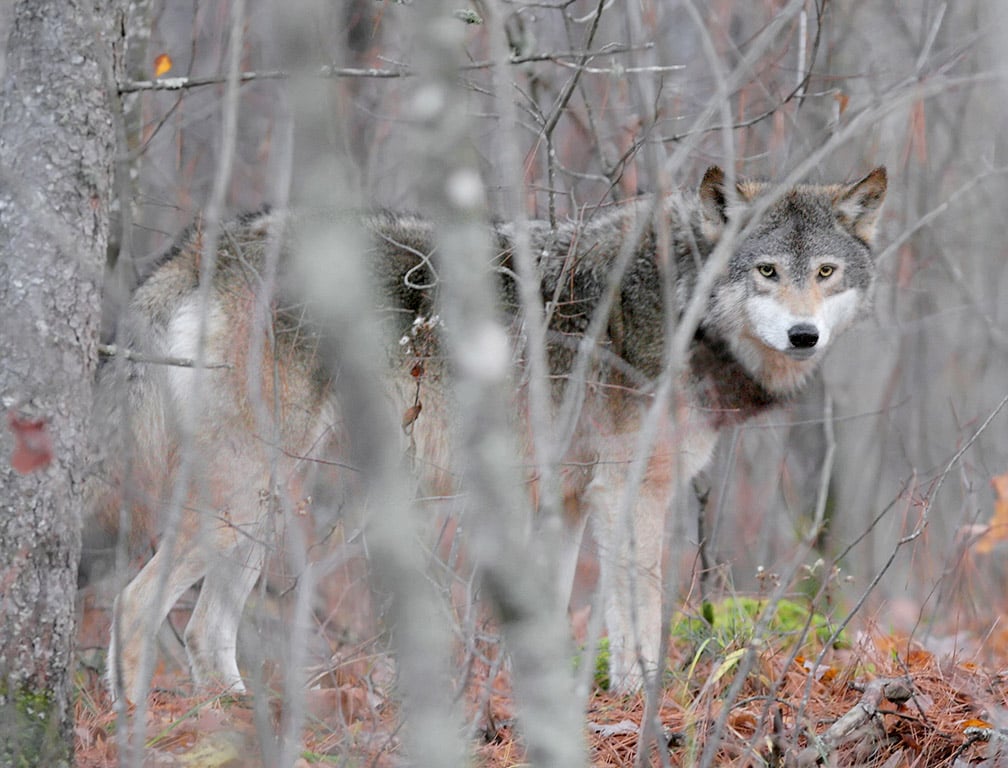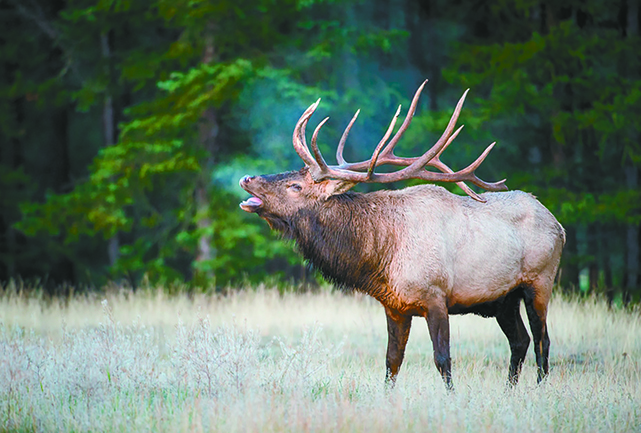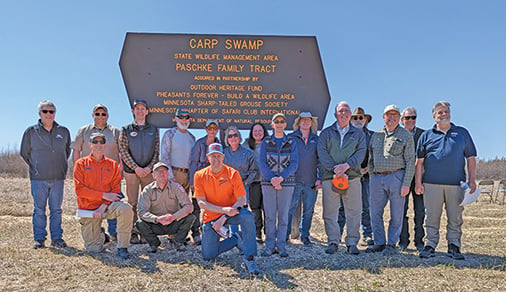Beyond Minnesota: Dutch court rules wolves at national park may be shot with paintball guns – Outdoor News

The Hague, Netherlands (AP) — A Dutch court ruled Jan. 24 that authorities may use paintball guns to shoot at wolves in a popular national park to scare them after at least one of the animals began approaching human visitors.
The decision was a victory for the eastern province of Gelderland, which has sought to frighten the wild wolves by using paintball guns. Wolves are protected in the Netherlands and may not be hunted.
A wildlife protection organization that opposes the plan said it would appeal the ruling.
Two centuries after wolves were hunted to extinction in the Netherlands, the animals officially returned to the country in 2019 when a pair of the animals crossed the border from Germany and gave birth to three cubs on Dutch soil.
The European Commission announced last year that it’s weighing whether to rein in protective measures for the animals amid farmers’ concerns about their livestock.
RELATED COVERAGE FROM OUTDOOR NEWS:
For gray wolves, new planning is in the works
Elected officials from Minnesota get earful on wolves during gathering that draws hundreds
Newly-published study examines deer behavior in the presence of wolves
Experts and environmental groups estimate that up to 19,000 wolves may be present in the 27 EU member countries, with populations of more than 1,000 thought to exist in Bulgaria, Greece, Italy, Poland, Romania, and Spain.
The Central Netherlands District Court said in its ruling that a female wolf at the Hoge Veluwe National Park had been seen approaching walkers and cyclists, displaying what it called “unnatural behavior.”
The park is a popular destination for hikers and bicycle riders and also is home to a world-renowned art gallery, the Kröller-Müller Museum. It also is home to animals including deer, mouflon sheep, and wild boars. Those animals have been repeatedly attacked by wolves in recent years.
The park recently posted footage on Instagram that it said showed a confrontation between two packs of wolves – one inside the fenced-off park and another outside.
An expert who gave evidence to the court on behalf of the province said that the female wolf was “becoming increasingly bolder,” the court said in a statement.
“The expert concludes that this unnatural behavior poses a serious threat to public safety. The fact that the wolf seems to be less and less afraid of people does not mean that the animal can no longer become aggressive and bite,” it added.
It wasn’t immediately clear when authorities would begin using paintball guns to target wolves in the park.
WISCONSIN
USFWS Considers Adding 10 More Species to Endangered List
Madison, Wis. (AP) — Federal wildlife officials announced Jan. 24 they will consider adding 10 new species to the Endangered Species Act, including a big bumble bee that serves as a key pollinator across the United States.
U.S. Fish and Wildlife Service officials said they had completed 90-day reviews of petitions to add the species to the list and determined that listing may be warranted. The finding triggers reviews of the species’ status.
One of the more prominent species up for consideration is the Southern Plains bumble bee, a large black-and-yellow bumble bee that inhabits open prairies, meadows, and grasslands in the Midwest, the mid-Atlantic states, and the Plains states from Texas to North Dakota. It’s also found in the grasslands and savannas in the southeastern U.S., including Florida. Queens can grow as large as an inch; workers can grow to as large as three-quarters of an inch.
The Center for Biological Diversity petitioned the U.S. Fish and Wildlife Service in 2022 to include the bee on the Endangered Species List.
The other species under review include the betta hendra and the betta rutilans, freshwater fish found in Borneo; the Hickory Nut Gorge salamander, an amphibian found in western North Carolina; the pygmy rabbit, a small rabbit found in mountainous areas of the western U.S.; and the Railroad Valley toad, a small toad that lives only in the wetlands of the Lockes Wildlife Management Area in Nye County, Nevada.
Also up for review are the Southwest spring firefly, an invertebrate native to Arizona that faces habitat loss due to alteration or loss of ground and surface water flows, livestock grazing, and mining; the white-margined penstemon, a rare perennial plant found only in the Mojave Desert; and the yellow-spotted woodland salamander, which lives on the Appalachian plateau in Kentucky, Tennessee, Virginia, and West Virginia.
More than 1,300 species are listed as either endangered or threatened in the U.S. under the Endangered Species Act. Listing protects organisms from being harmed, killed, imported, or exported. Listing also mandates development and implementation of population recovery plans.






